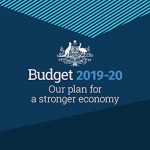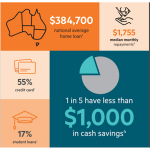Limits on superannuation contributions in the 2018/19 financial year
Superannuation rules in effect for the 2018/19 financial year continue to limit the amount of money Australians can contribute to the tax advantaged superannuation system.
So, how much can you contribute this financial year?
Here’s a brief summary:
Contributions which qualify for a tax deduction:
Concessional contributions (which include personal deductible contributions, employer contributions and salary sacrifice contributions) are now limited to $25,000 per annum.
Employees can now choose to either contribute to super via pre-tax salary sacrifice which reduces their taxable income, or elect to claim a tax deduction for post tax contributions.
Please note if you are aged 65 to 75, you must pass a work test to be eligible to contribute to super.
People aged more than 75 are not eligible to make personal contributions. The only exception to this rule is if you are eligible to make downsizer contributions. There is no work test requirement, nor age restriction for the downsizer contributions.
Contributions which do not qualify for a tax deduction:
From 1 July 2017, there are further restrictions on being able to make personal non-concessional contributions to super (i.e. contributions for which you are not going to claim a tax deduction).
Those people with more than $1.6 million in super, measured on 30 June immediately before the financial year of the contribution, are not allowed to make any more non-concessional contributions.
For people with less than $1.6 million in super, you could invest up to $100,000 per annum. If you are under age 65 and have less than $1.4 million in super, you can bring forward up to two years of non-concessional contributions meaning you could contribute $300,000 this financial year – as long as you have not triggered the ‘bring forward’ provision in the previous two financial years.
Note; transitional arrangements are available if you triggered, but did not fully use the bring forward provision in 2015/16 or 2016/17 financial years.
Note that if you have between $1.4 and $1.5 million in super you can bring forward one year of non-concessional contributions but if you have between $1.5 and $1.6 million you cannot bring forward any further contributions.
If you do use the ‘bring forward’ provision, you cannot make a non-concessional contribution for the number of years you have brought forward.
Super pension cap of $1.6m:
The maximum amount of superannuation that can be used to fund a tax-free pension in retirement is now restricted to a ‘transfer balance cap’ of $1.6 million per individual.
This has the effect that when transferring a member’s superannuation accumulation account to pension phase to start an account based pension to fund retirement, any balance above the $1.6 million balance cap will need to remain in accumulation phase where it will continue to be taxed at the (albeit concessional) rates applicable to superannuation, rather than being tax free.
The Low Income Superannuation Tax Offset (LISTO):
The Government currently provides a contribution of up to $500, equal to 15% of concessional contributions made, up to $3,333, for workers with an adjusted taxable income of up to $37,000 p.a., where at least 10% of total income is from business or employment.
The Government co-contribution:
Currently, if you are working, have less than $1.6 million in super, and make a non-concessional contribution to super (without exceeding your non-concessional cap for the year), and have total income up to $52,697 this year, you may be eligible for a super co-contribution from the Government of up to $500.
Spouse contributions:
If your partner’s relevant income is $37,000 or less, they have less than $1.6 million in super and haven’t exceeded their non-concessional cap for the year, you could qualify for a tax offset of up to $540 on the first $3,000 you contribute to superannuation for them from your after-tax income.
This tax offset decreases as your partner’s income increases above this level and phases out when their income reaches $40,000.
Additional tax on concessional contributions for high income earners:
If your income plus concessional contributions (within cap limits) exceed $250,000 pa, an additional 15% contributions tax will be levied on contributions that are above the $250,000 threshold,
Penalties for exceeding contribution caps:
If made from 1 July 2013, excess concessional contributions are taxed at a person’s marginal tax rate, plus excess concessional contributions interest charge.
You can also elect to have up to 85% of your excess contributions released from your fund, or you can leave the amount in your fund, where it will be included in your non-concessional contributions cap.
Excess non-concessional contributions are either taxed at 47%, which must be paid from the fund, or you can elect to withdraw your excess contributions plus 85% of associated earnings.
The excess contribution amount will not be subject to tax, as it was made using after tax income, but any associated earnings are treated as assessable income and taxed at your marginal tax rate.
From 2017-18 financial year onwards, if you have exceeded your non-concessional contribution cap, the ATO will ask your super fund to release the required amount to the ATO on your behalf. The ATO will also amend your income tax assessment to include the associated earnings and you will pay tax on the associated earnings at your marginal tax rate. The ATO will also use the money released to pay any tax or government debts and refund any remaining balance to you.
Article source: Australian Unity Personal Financial Services
Disclaimer: This article is not legal or personal financial advice and should not be relied on as such. Any advice in this document is general advice only and does not take into account the objectives, financial situation or needs of any particular person. You should obtain financial advice relevant to your circumstances before making investment decisions. Where a particular financial product is mentioned you should consider the Product Disclosure Statement before making any decisions in relation to the product. Whilst every reasonable care has been taken in distributing this article, Australian Unity Personal Financial Services Ltd does not guarantee the accuracy or completeness of the information contained within it. Any views expressed are those of the author(s) and do not represent the views of Australian Unity Personal Financial Services Ltd. Australian Unity Personal Financial Services Ltd does not guarantee any particular outcome or future performance. Taxation Information in this document should not be relied upon without seeking specialist advice from a tax professional. Australian Unity Personal Financial Services Ltd ABN 26 098 725 145, AFSL & Australian Credit Licence No. 234459, 114 Albert Road, South Melbourne, VIC 3205. This document produced in December 2018. © Copyright 2018



